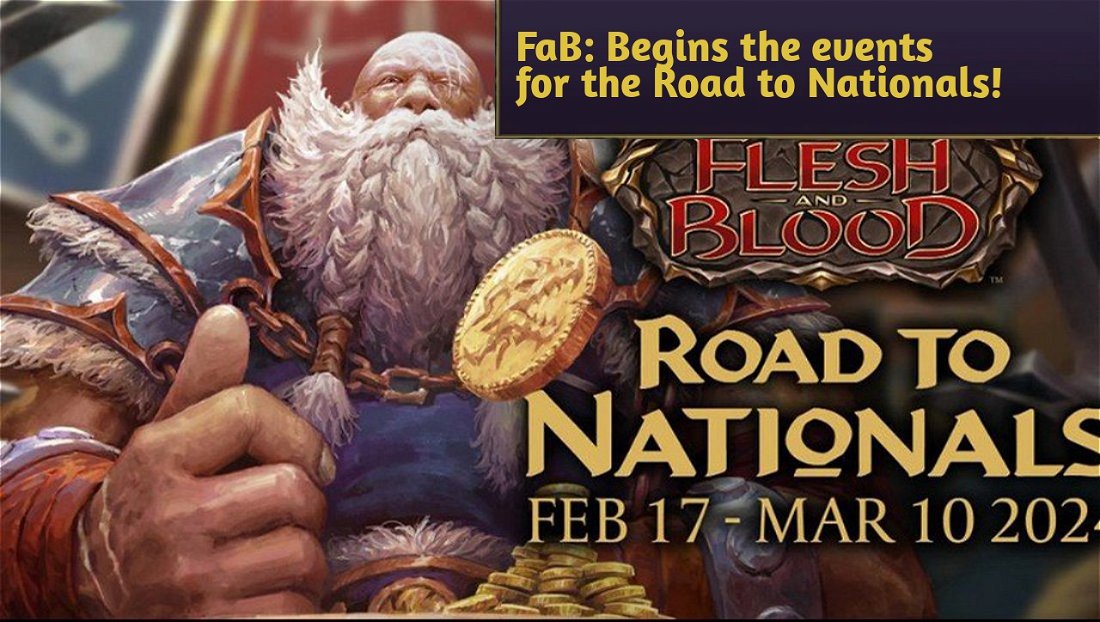Introduction
Now that we've already discussed what value is in Flesh and Blood, and how to use our arsenal more efficiently, let's discuss another FaB concept that any player needs to understand and is some of the most essential cards in any deck: equipment!
One of the most basic premises in this game is that our heroes can choose a generic equipment piece or an equipment piece from their class specifically to start the game with: Head, Chest, Hand, Legs, and Off-Hand. They can be used in many ways and can block or not. Thanks to this premise, we start the game stronger, but, as time goes on, we become more vulnerable if they break or can no longer defend us.
A Closer Look at Equipment
Let's start from the top. Equipment and weapons are cards in the game that don't start in your deck (except EVO equipment); instead, they start already on the board. Weapons, in general, attack, and equipment have abilities and/or defense values.
There are four equipment slots: Head, Chest, Arms, and Legs, and weapons can be 1H or 2H. You can equip two 1H weapons (the same weapon or not), one 2H weapon, or one 1H weapon and 1 Off-hand weapon.
Some equipment has the single, simple goal of blocking damage, but there is a certain pattern when we look at slots and compare their roles.

Head equipment usually has abilities that help you draw cards and/or manipulate your deck. One of the main examples is Crown of Providence, but many others also swap cards from your hand and/or topdeck, such as Skullbone Crosswrap and Viziertronic Model i.

Chest equipment usually works with costs: be it by offering extra resources or reducing the cost of your cards. Our main example is Fyendal's Spring Tunic, which gives us one resource every three turns, but many others have similar effects, such as Sash of Sandikai, Tectonic Plating, Deep Blue, or Courage of Bladehold.

Arm equipment helps us deal more damage, be it by increasing the attack power of an attack or weapon, or by creating situations that allow us to deal more damage, such as, for instance, Grasp of the Arknight.

And, lastly, Leg equipment works with the Action Point through Go Again (such as, for instance, Snapdragon Scalers or Tide Flippers), or actually just gives the player the point (such as Beaten Trackers and Achilles Accelerator).
Equipment as Deck Strategy
Before we discuss the most complex equipment strategy - which is their block value - let's explore a situation in which equipment becomes essential: when it becomes the deck's core strategy.
These cards are famous for bringing core abilities to certain decks, and, without them, their strategy would be considerably weaker or just overall different. Let's see some examples:

Skullbone Crosswrap is the main Head equipment used by Azalea, Ace in the Hole. Its Opt 1 ability allows us to activate this hero's ability with more information available, and it helps us filter the top of our deck. Without it, this Ranger's ability can "whiff" and possibly make you lose an attack that was already in the arsenal.
There are also other cards that fit this category. New Horizon for Lexi, Livewire, Crown of Seeds for Oldhim, Grandfather of Eternity's fatigue strategy, Flamescale Furnace for Dromai, Ash Artist, and so on and so forth.
Equipment that Helps other Strategies

Some of these cards aren't "required" in certain decks, but they are so fundamental for the deck to work that they become essential in that particular strategy.
One of the most visible examples is Tectonic Plating in Bravo, Showstopper. This Chest equipment allows us to reduce the cost of the next Guardian attack by one. It might not seem like much, but reducing the cost of cards like Crippling Crush, Chokeslam (1), and Macho Grande (3), optimizes our costs significantly and allows us to use less cards to pay for them.
The same applies to Teklo Foundry Heart, which corrects how much each of our turns cost, and Fyendal's Spring Tunic, which helps us pay for Oasis Respite (1), a 1-cost attack in our arsenal, the attack of one of our weapons, and so on and so forth.
Utility Equipment
When we choose our equipment, some of them aren't used to block nor are extremely essential in our deck, but they give us some slight advantage or are just too useful to be left out.

Snapdragon Scalers is an excellent example of this applicability, particularly in Fai, Rising Rebellion and Dromai, Ash Artist decks. These two heroes need cards that start their combat chains (in Dromai's case, it will give Go Again to your Dragons, and, in Fai's case, it will give Go Again to your back-to-back attacks); however, we won't always have these "enablers" in our hand.
Consequently, these heroes can, for instance, start a turn with a Snatch (1), and, next, break the Snapdragon Scalers to follow up. Thanks to this card, these heroes' turns were saved, but it is relatively common to see them go through entire games without needing this equipment.
Another example in this category is Warband of Bellona. This equipment, which was designed specifically for Ser Boltyn, Breaker of Dawn, saves a hand that doesn't charge any attack, but using Temper 2 will always be useful. Even if we never need to activate its ability in our matches, its utility makes it excellent in any list.
EVO Equipment
Mechanologists can use special equipment: EVOs. These, unlike other equipment, start in our deck and are considered actions which, when played, equip themselves as long as we have base equipment on a slot already.

Usually, EVOs dictate what the deck's strategy will be. Except for Teklovossen, Esteemed Magnate, whose strategy focuses on EVO equipment completely, other Mechanologists use their equipment to complement their strategies.
Dash, Inventor Extraordinaire uses Evo Steel Soul Controller purely because of Temper 3 (considering its ability will never be triggered) and, considering it is a base EVO equipment, we can equip another one on top of it - and like so remove all its counters and increase its Temper even more.
Unlike Dash, which uses EVO equipment more defensively, Maxx 'The Hype' Nitro uses Evo Face Breaker offensively, not only by transforming their Hyper Driver into 4 defense, but also by transforming the items into 2 power for the next attack, like Teklo Pounder (with a few differences).
When We Block with Equipment
We reached the most important part of this article. Let's try to understand in which situations we'll use equipment to block and why!
Equipment that has a defense value (unlike zero or no value) has, so far, one of these three abilities: Battleworn, Temper, or Blade Break.
Blade Break means that, after the combat chain closes, the equipment in question will break and go straight to the graveyard; so, Mask of Momentum will defend two damage and break.
Battleworn means that, after defending and after the combat chain closes, the equipment in question will get a -1 defense counter. However, even if this equipment has enough counters to defend zero damage, it won't break. In practice: Teklo Foundry Heart will defend two, then one, then zero damage, but it won't break.
Temper is the mixture of these two abilities. It gets counters just like Battleworn, but, when it has enough counters to defend zero damage, it will break. Flamescale Furnace will defend two, then one damage, and then, as soon as it leaves the combat chain, it will break, defending three damage throughout the match.
So, when we have a Temper or Battleworn equipment with a defense value bigger than one, we can say its total block value will be bigger than what it is written on it. Therefore, a Battleworn 2 equipment (this also applies to Temper) will defend three damage throughout the match: first, it will defend two, then one, then zero damage. As for Blade Break, as it breaks as soon as the combat chain closes, it will defend the value that is written on it only once.
Let's analyze an equipment set and see what this means in practice.

In this example, we have the standard set for a Guardian (usually Bravo, Showstopper), so we can say this set will block, in total, nine damage: two from Crown of Providence, three from Tectonic Plating and Crater Fist, and one from Ironrot Legs, which totals nine damage. We can say, for instance, that this equipment set gave this hero an "extra nine health points". But, of course, blocking with them goes beyond conserving our health points.
When You're Only Being Threatened with Damage
Several decks don't threaten us with nothing but pure damage when they attack. Brutes are one of them.

Regarding Rhinar, Reckless Rampage specifically: this deck has several powerful attacks, for instance, Alpha Rampage, Pack Hunt (1), the Bloodrush Bellow turns, the Intimidate ability, and many others. Apparently, we should use our equipment to conserve health points and mitigate the damage Brute deals, right? Not exactly.
Sometimes it is more interesting to use our equipment at the end of the game, when both heroes' life points are close to zero, and equipment, in this situation, saves us cards in our hand we can use to finish the game. Let's see an example.

Our hero, then, is Bravo, Showstopper. We have Tectonic Plating available to block (we already used the other cards to block) and Anothos to attack. The opponent is irrelevant, both players only have one health point left, and your hand has the following cards:

In our arsenal, we have a Macho Grande (3).
Our opponent only played one card in their turn: Critical Strike (1). We need to block the attack, otherwise we lose. How do we proceed?
We can play the next turn in several ways that can push our opponent against the wall and guarantee our victory (if we play Crippling Crush or Macho Grande (3)), but we need to survive this turn. Without any equipment to defend us, we'll have to use two cards in our hand to block (Show Time! and Crippling Crush) and, in our turn, we create a Seismic Surge through Tectonic Plating (pitching Chokeslam (3)) and attack with Anothos (pitching Debilitate (1)). Even though we threaten six damage, our victory isn't guaranteed, and the game can still go on and become even more complex.
However, we can defend for two with Tectonic Plating in this example, so we can defend with this equipment plus Debilitate (1) and, in our turn, we can pitch all the cards in our hand to play Macho Grande (3) from our arsenal and, depending on our opponent, we'll guarantee our victory through the attack's Dominate ability.
Because we could defend for two, we could save one of the cards in our hand that guaranteed us a victory.
Even though blocking pure damage isn't always the best decision, there are some situations in which this can be interesting.
When We Defend with Equipment Aggressively
When we talk about using equipment aggressively, this means blocking with them as early as possible or in the most favorable moments of the game very early on. Using equipment like this seems to go against what we discussed before in this article, but it has its advantages.
The best example that fits this situation is Crown of Providence.

Because of its ability, which moves one card in our hand or in our arsenal in exchange for another, this crown opens up an array of strategies that go beyond its Blade Break 2. It is excellent to fix bad hands, save cards for the late game, enable our arsenal (that is, get rid of a card that stuck in our arsenal that we can't play), or recycle the arsenal and use the card we drew to block.
Despite this flexibility, however, we don't always need to move our cards around, and thus it can simply be a card that blocks for two in a particular situation.

Another equipment that can be used aggressively is Valiant Dynamo. Thanks to its ability, which removes its -1 counter, we can use it several times to block, and, in strategies like Kassai, Cintari Sellsword decks, this equipment would create a lot of value for us throughout the game. In Classic Constructed, which has longer matches, it has even more value.
When We Use Equipment Aggressively
We can still use equipment to create aggressive turns, be it by boosting attacks, discounting costs or similar. One of the best examples in this category is Stubby Hammerers.

Currently, this Hand equipment is banned in every format that exists. Initially banned in Blitz, a bit after in Classic Constructed, and, lastly, in Commoner, it would allow decks like Fai and Chane decks to give 1 attack power to all their attacks - which would total 4 or 5 extra damage every turn. This is one of the most notable examples of when we use equipment offensively, but it also isn't restricted to this game style.
Mask of the Pouncing Lynx can be transformed into a Lava Burst (1) or a Salt the Wound (2). Bull's Eye Bracers can put in one extra arrow per turn to threaten more damage. Heartened Cross Strap reduces costs and allows us to create an extra attack per turn.
Final Words
Even though they seem trivial, equipment cards are one of the most important strategies in FaB - and it makes sense that they are, in general, the most expensive cards in each deck. Understanding how to use them and when to block with them can be the key to winning a match.
Thank you for reading, and until next time!














— Comentários 0
, Reações 1
Seja o primeiro a comentar